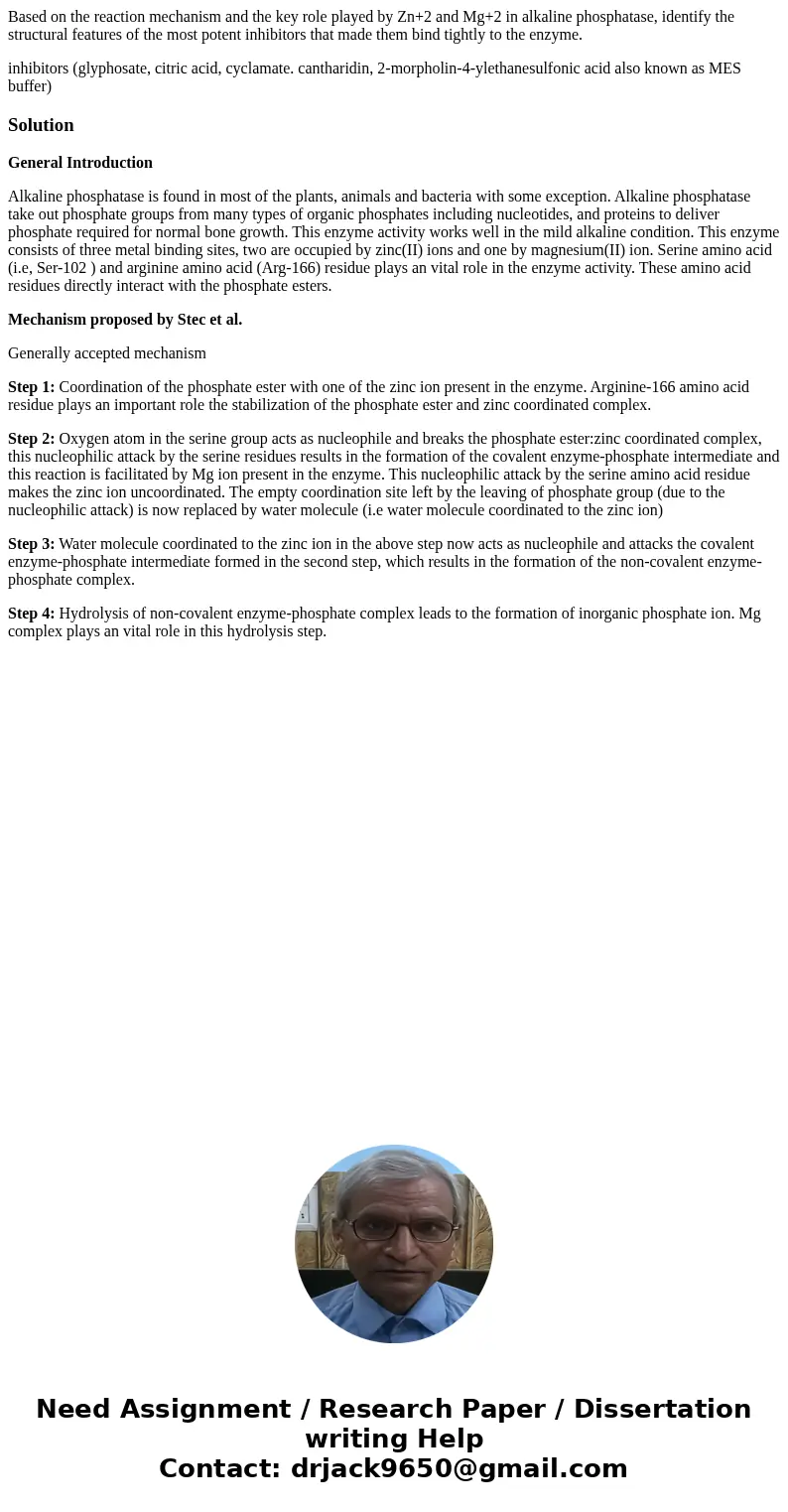Based on the reaction mechanism and the key role played by Z
Based on the reaction mechanism and the key role played by Zn+2 and Mg+2 in alkaline phosphatase, identify the structural features of the most potent inhibitors that made them bind tightly to the enzyme.
inhibitors (glyphosate, citric acid, cyclamate. cantharidin, 2-morpholin-4-ylethanesulfonic acid also known as MES buffer)
Solution
General Introduction
Alkaline phosphatase is found in most of the plants, animals and bacteria with some exception. Alkaline phosphatase take out phosphate groups from many types of organic phosphates including nucleotides, and proteins to deliver phosphate required for normal bone growth. This enzyme activity works well in the mild alkaline condition. This enzyme consists of three metal binding sites, two are occupied by zinc(II) ions and one by magnesium(II) ion. Serine amino acid (i.e, Ser-102 ) and arginine amino acid (Arg-166) residue plays an vital role in the enzyme activity. These amino acid residues directly interact with the phosphate esters.
Mechanism proposed by Stec et al.
Generally accepted mechanism
Step 1: Coordination of the phosphate ester with one of the zinc ion present in the enzyme. Arginine-166 amino acid residue plays an important role the stabilization of the phosphate ester and zinc coordinated complex.
Step 2: Oxygen atom in the serine group acts as nucleophile and breaks the phosphate ester:zinc coordinated complex, this nucleophilic attack by the serine residues results in the formation of the covalent enzyme-phosphate intermediate and this reaction is facilitated by Mg ion present in the enzyme. This nucleophilic attack by the serine amino acid residue makes the zinc ion uncoordinated. The empty coordination site left by the leaving of phosphate group (due to the nucleophilic attack) is now replaced by water molecule (i.e water molecule coordinated to the zinc ion)
Step 3: Water molecule coordinated to the zinc ion in the above step now acts as nucleophile and attacks the covalent enzyme-phosphate intermediate formed in the second step, which results in the formation of the non-covalent enzyme-phosphate complex.
Step 4: Hydrolysis of non-covalent enzyme-phosphate complex leads to the formation of inorganic phosphate ion. Mg complex plays an vital role in this hydrolysis step.

 Homework Sourse
Homework Sourse